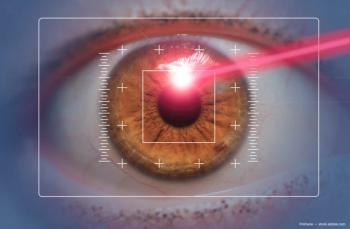
What if? Ophthalmology without OCT – Part 1
To celebrate Ophthalmology Times' 50th anniversary, we asked leading experts what the practice would look like today had optical coherence tomography (OCT), one of the biggest innovations in the field, never been invented.
In celebration of Ophthalmology Times' 50th anniversary, we asked leading experts what the practice would look like today had optical coherence tomography (OCT), one of the biggest innovations in the field, never been invented.
Video Transcript:
Editor's note: The below transcript has been lightly edited for clarity.
Roger A Goldberg, MD, MBA:
It's hard to almost imagine what it's like to practice. When I started my training, we were just kind of transitioning from time domain to spectral domain OCT. So I really came of age in the spectral domain OCT, and it just adds so much to our understanding of these retinal diseases, and frankly, adds so much efficiency to the our ability to see a very large number of patients each and every day. So it's hard to imagine without OCT, but it's in many respects, like a VEGF meter, and so we're able to track our treatment algorithms and approaches for wet AMD, these patients with geographic atrophy, DME, RCO. It's really been the game changer technology. That, along, I think, with anti-VEGF therapies and probably phacoemulsification in the last 100 Years of ophthalmology.
Jay Chhablani, MD:
I can say that, I became a retinal specialist when the OCT was already there, [it[ may not be that advanced technology, that not advanced OCT systems. But I cannot think of being a retina specialist without OCT because that has really given us such great information about the disease identification, follow-up, as well as the treatment response. So I cannot think [of] a retina specialist life without OCT.
Sophie J Bakri, MD
So without OCT, I think that we would not have the sensitivity in treatment. What we would likely be doing is potentially treating patients more often, for example, in order to make up for the fact that we don't know if there are small amounts of fluid. On the other hand, some may decide, you know, they'll go for visual acuity, but then it may be a little late to treat when someone's already lost visual acuity. So I think OCT has been phenomenal in allowing us to treat patients before vision loss.
Andrew G Lee, MD:
So if there was no OCT, we'd still be able to diagnose things clinically. However, we used to have to rely on fluorescein angiograms, and we'd have to guess a lot of the time in electrophysiology. So in our clinic, the number of unexplained vision loss cases that are neurop versus retina, where we'd have to do a fluorescein angiogram, just went away; 75% of the time, the OCT answers the question. So the big change has been moving away from fluorescein angiogram for unexplained vision loss and towards OCT, and it's just saved a lot of trouble. In the past, when we didn't know if it was threaten our optic nerve, they had to get the full neurop workup as if it was neurop. So that's MRI and a CT and a lumbar puncture. So OCT has saved not only a lot of patients from getting the diagnosis, but also making the wrong diagnosis and wasting a bunch of money. So it saved money in the long run. I think we would be doing what we did in the past without OCT, but now that we have it, it's a game changer.
Newsletter
Don’t miss out—get Ophthalmology Times updates on the latest clinical advancements and expert interviews, straight to your inbox.















































.png)


